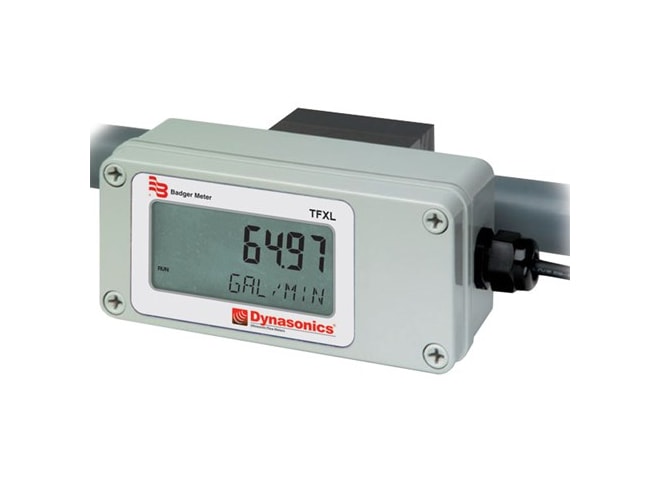The Dynasonics TFXL ultrasonic flow meter clamps onto the outside of a pipe and does not
contact the internal liquid. This non-invasive system allows solids to pass through the pipe
with no effect on the flow meter. Y-strainers or filtering devices are not needed. In addition,
installation of the Dynasonics TFXL ultrasonic flow meter is easy and low cost.
The Dynasonics TFXL ultrasonic flow meter provides instantaneous rate and accumulated flows
along with 4-20mA and pulse outputs. Available with or without a local display, the Dynasonics
TFXL ultrasonic flow meter is housed in an enclosure suitable for outdoor mounting. Compact
integral mount systems can accommodate pipes 2 inches [50 mm] and smaller. For additional
flexibility, remote mount systems are available for pipe sizes 1/2 inch [12 mm] and higher. A
software utility is available for customer configuration and in-field calibration.
Greater accuracy can be attained in applications with high levels of entrained gases. The
Dynasonics TFXL ultrasonic flow meter will automatically correct displayed flow rates and
electronic outputs.
The inherent advantages of the Dynasonics TFXL ultrasonic flow meter over competitive technologies
include ease of installation, immunity to suspended solids and gas pockets, and a large bi-directional
measuring range. In addition, the non-contact design eliminates any fluid compatibility issues. The
Dynasonics TFXL ultrasonic flow meter was designed to replace mechanical flow meters in
applications where liquid conditions tend to damage or impede mechanical flow meter operation.
No maintenance of the Dynasonics TFXL ultrasonic flow meter is required.
Operating Principle
Transit time flow meters utilize two transducers which function as both ultrasonic transmitters
and receivers. The flow meters operate by alternately transmitting and receiving a frequency
modulated burst of sound energy between the two transducers. The burst is first transmitted
in the direction of fluid flow and then against fluid flow. Since sound energy in a moving liquid is
carried faster when it travels in the direction of fluid flow (downstream) than it does when it
travels against fluid flow (upstream), a differential in the times of flight will occur. The sound's time
of flight is accurately measured in both directions and the difference in time of flight calculated.
The liquid velocity (V) inside the pipe can be related to the difference in time of flight (dt) through
the following equation: V = KDdt, where K is a constant and D is the distance between the
transducers.


















